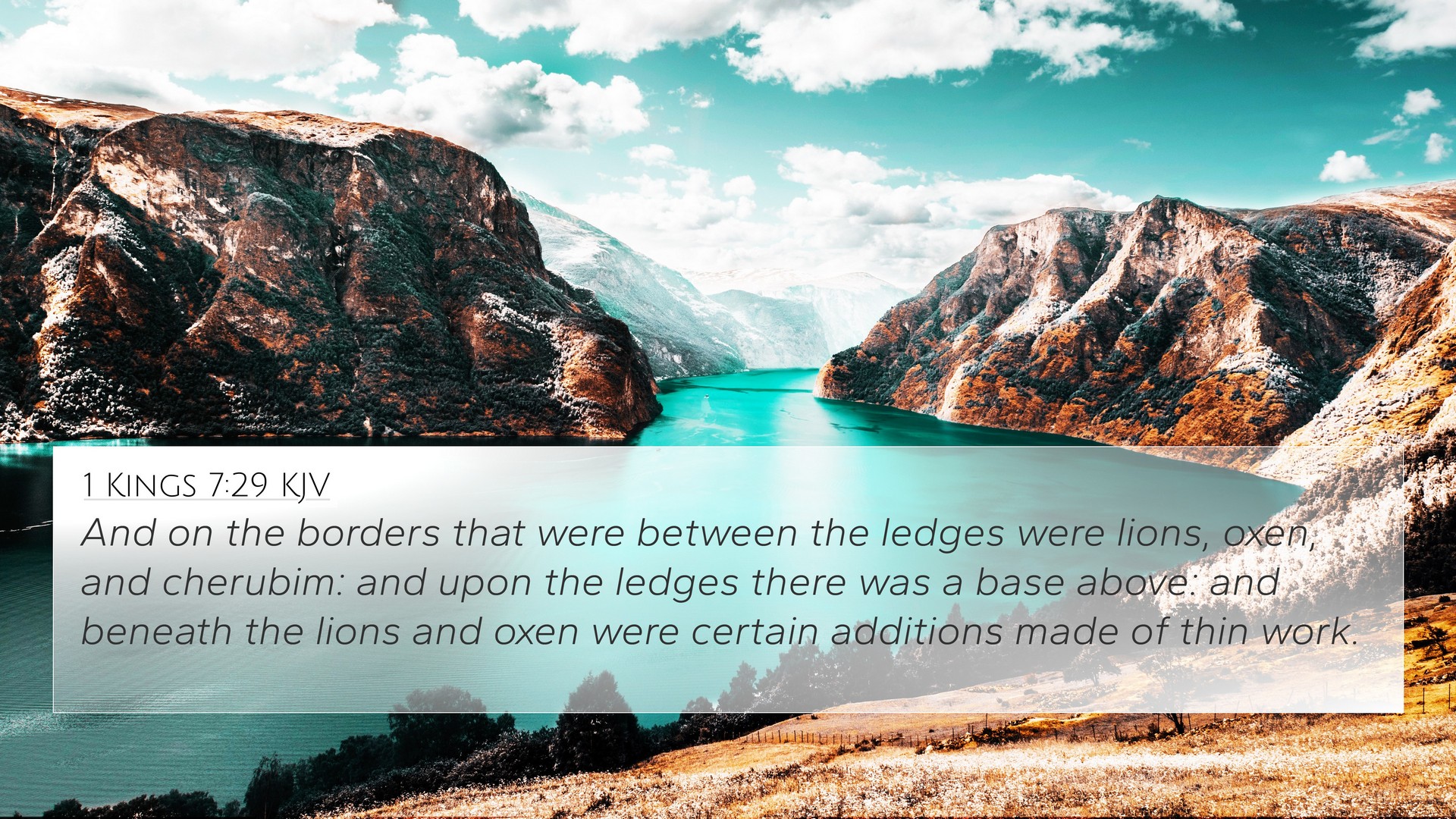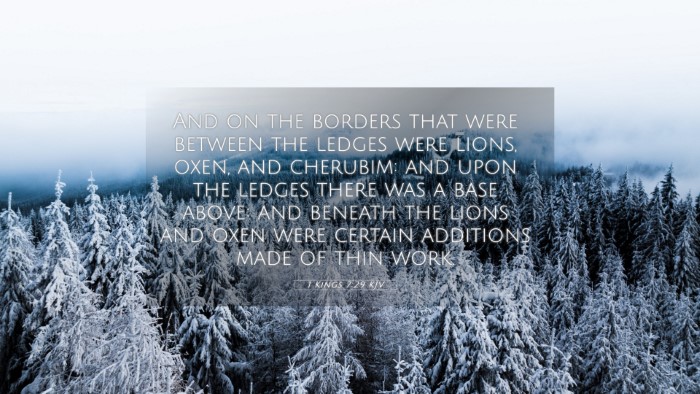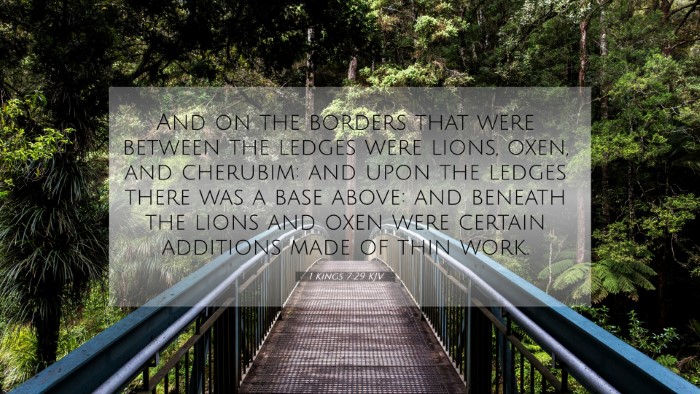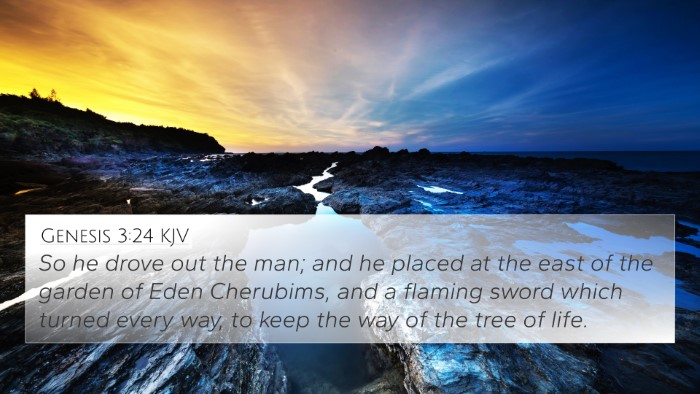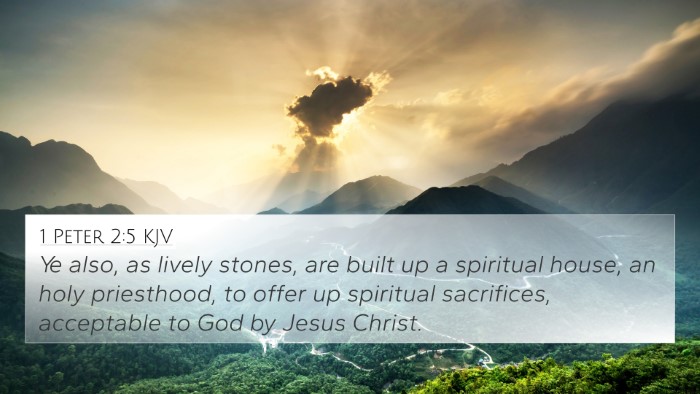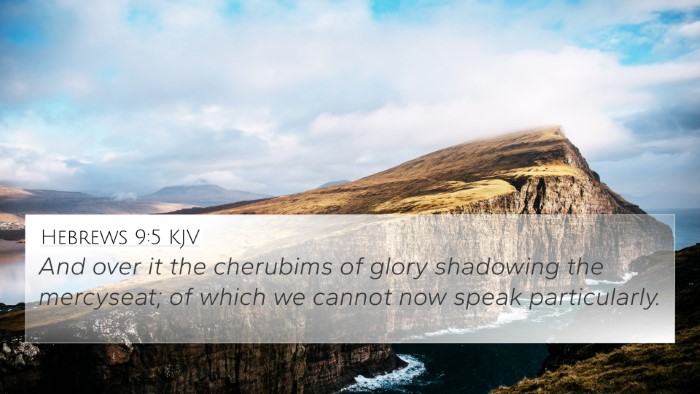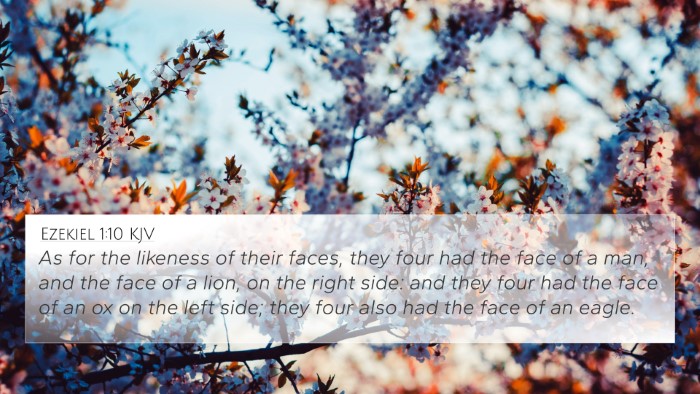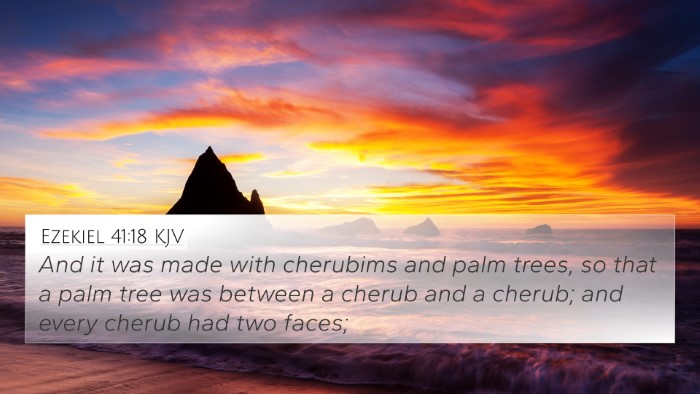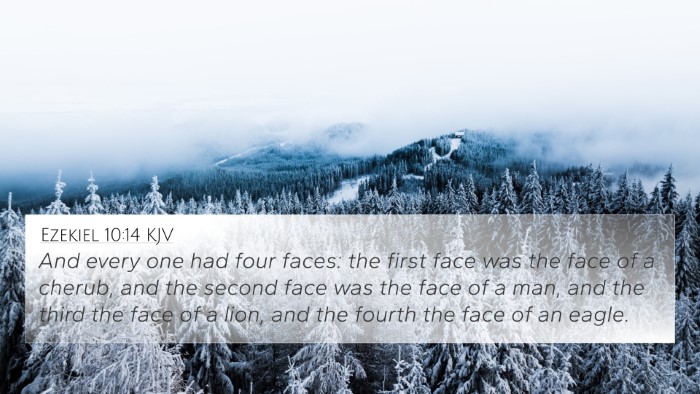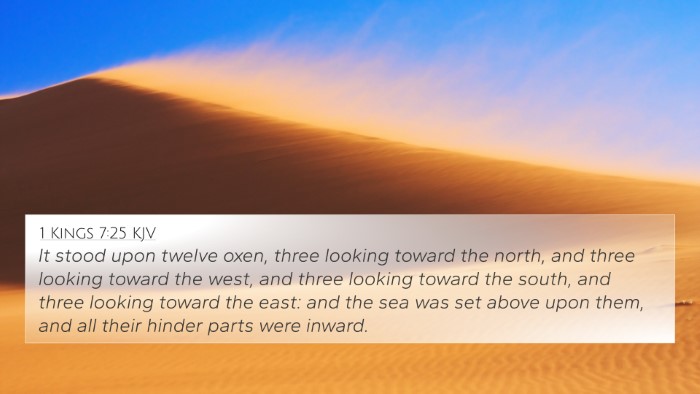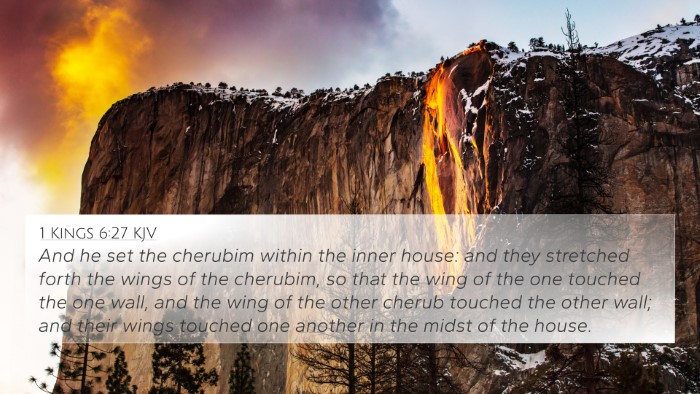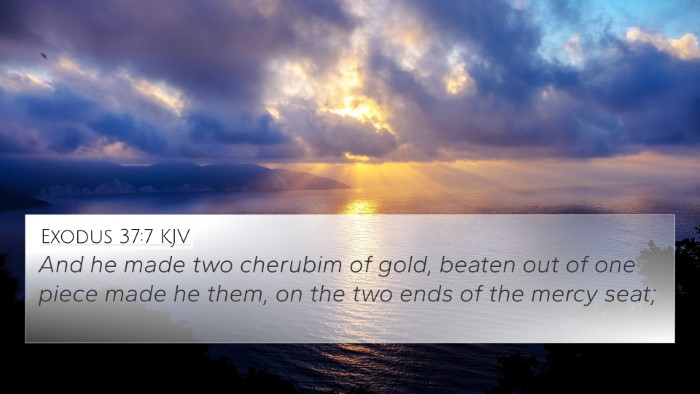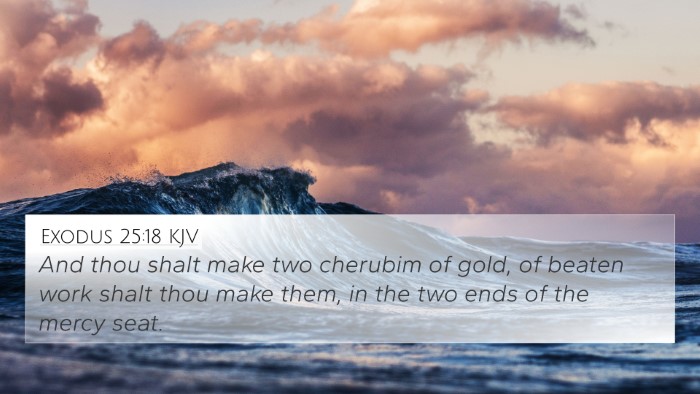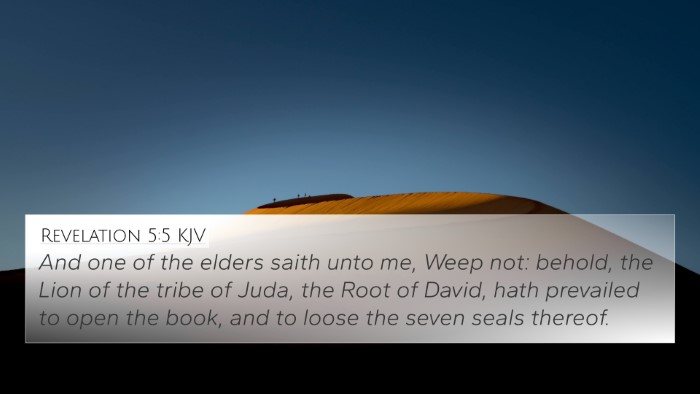Understanding 1 Kings 7:29
Bible Verse: 1 Kings 7:29
"And upon the tables was a work of the cherubims, and palm trees, and open flowers: and on the other tables the like."
Verse Meaning Summary
This verse comes from the description of the furnishings and decoration of King Solomon's temple. The intricate carvings and designs—including cherubim, palm trees, and open flowers—carry significant symbolic meanings, reflecting both the beauty of God's creation and the divine presence in worship.
Symbolism and Interpretations
- Cherubim: Represent God's guardianship and the divine presence; they are often associated with heavenly beings that serve in the presence of God (Genesis 3:24; Exodus 25:18-20).
- Palm Trees: Symbolize victory and peace; they often represent eternal life and triumph in both Jewish and Christian traditions (Leviticus 23:40; Revelation 7:9).
- Open Flowers: Represent beauty and God's providence in creation (Matthew 6:28-29). They remind us of His care for His creation.
Public Domain Commentary Insights
Insights from respected commentaries help to deepen our understanding of this verse:
- Matthew Henry: Emphasizes that the artistry in the temple represents the glory and majesty of God. The decorative elements serve a dual purpose of beauty and representation of God's holiness.
- Albert Barnes: Points out how the detailed carvings signify God's attention to the beauty in worship. Each element is purposeful in conveying spiritual truths and the significance of the temple as a dwelling place for the Divine.
- Adam Clarke: Discusses the metaphorical interpretations of the designs and their connection to creation, underscoring the need for worship to be both reverent and beautiful, reflecting God's own creation.
Bible Verse Cross-References
Several other Bible verses provide context and deeper understanding concerning 1 Kings 7:29:
- Exodus 25:18-20 - Discusses the cherubim placed over the mercy seat.
- 1 Chronicles 28:18-19 - Describes the pattern of the temple designed by David, which includes intricate ornamentation.
- Ezekiel 41:18-20 - Provides a vision of the temple with similar decorations reflecting divine design.
- Revelation 21:18-21 - Details the heavenly city adorned with precious stones, echoing the theme of beauty in God's creation.
- Songs of Solomon 7:7-8 - Highlights the beauty of nature in relation to God’s creation, mirroring the floral imagery.
- Psalm 92:12-14 - Expresses the flourishing of the righteous like the palm tree, connecting to the symbol found in the verse.
- Matthew 6:28-30 - Jesus speaks of flowers and their beauty, underscoring God's provision and care.
Connecting Themes
The themes interwoven in this verse reveal the richness of biblical texts, and how they relate to one another:
- The Divine Presence: The cherubim as symbols of God's close proximity and holiness, connecting to places of worship across scripture.
- The Importance of Beauty in Worship: The details of the temple remind believers that worship should reflect God’s beauty in a physical and spiritual sense.
- Cultural Significance of Gardens and Nature: The recurring motifs of flora in the Bible affirm God’s creation and the God-given beauty we engage with in worship.
Tools for Bible Cross-Referencing
To effectively study the connections between scriptures as seen in 1 Kings 7:29, consider utilizing:
- Bible concordances that highlight themes and significant words.
- Cross-reference Bible study methods for in-depth analysis of related verses.
- Bible reference resources such as chain reference Bibles for a comprehensive view of interlinked verses.
Conclusion
In interpreting 1 Kings 7:29, we not only explore the artistic nuances of Solomon's temple but also uncover theological truths that resonate throughout the scripture. The connections between the beauty reflected in God's creation and our worship practices offer a comprehensive understanding of reverence before the Divine.
